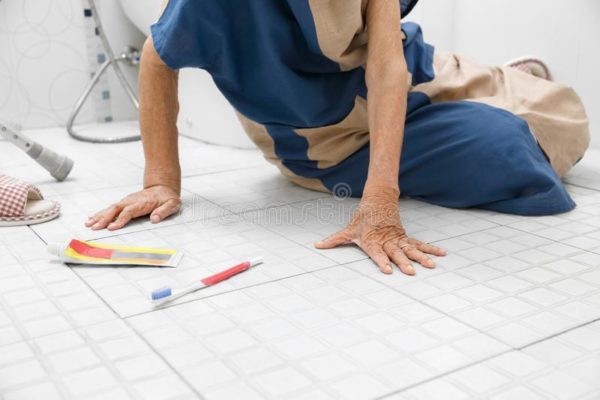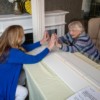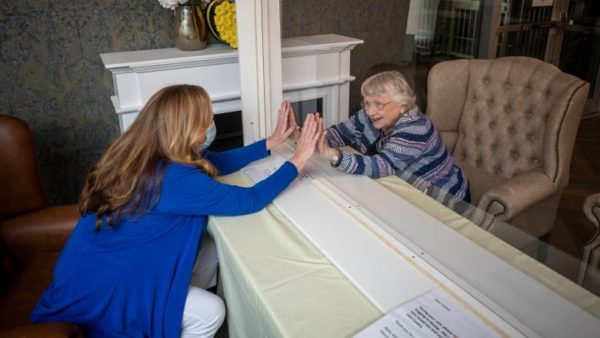
According to a September 2021 poll by Campaign Research, 96 percent of Ontario seniors over age 55 currently plan to remain in their own homes for as long as possible. The Globe and Mail reported that many Canadians watched with panic as long-term care residents bore the brunt of the pandemic, with thousands dying and many forced to isolate for months.
“The pandemic has created an opportunity to rethink a number of different approaches to ageing,” says Dr. Samir Sinha, director of Health Policy Research and co-chair of Ryerson University’s National Institute on Ageing (NIA). “They’re thinking: I don’t want to be one of those statistics on the news,” he said.
Nearly 100 percent of older Canadians recently surveyed plan to live independently in their own homes. Thirty percent don’t feel prepared should they be alone when a medical emergency occurs in their own homes. Close to 80 percent say they have not spoken to their healthcare professionals about what to do if a fall occurs to themselves or a loved one, but 83 percent of Canadians aged 55+ said they are open to receiving advice on how to live safely on their own.
Dr. Sinha is one of the nation’s most renowned gerontologists who is also the director of geriatrics at Sinai Health and University Health Network (UHN). He recently conducted a webinar for close to 800 people on “Practical Technologies that can Enable Ageing in Place” as part of NIA’s Healthy Ageing 101 webinar series.
As older Canadians, more so than ever before, want to maintain their independence as they age and live at home for as long as possible, they will face a growing risk for falls, and other medical or health emergencies that can occur at home, threatening their long-term health and independence. Dr. Sinha said older adults and their families are, in general, open to receiving advice on how to age well in their own homes, but are not asking for advice from their primary or other regular care providers. According to him, most healthcare providers are not aware of the rapidly evolving technology solutions, and what to consider recommending, that can better enable their patients and their families to age in place. This last point he made, in particular, was surprising and worrisome.
Dr. Sinha pointed out that falls are the leading cause of injury-related hospitalizations among Canadians 65 years and above. He said 25 percent of older Canadians have vision problems, including cataracts and glaucoma, and hearing problems that can impact day-to-day tasks that require focus and balance.
Other health conditions such as diabetes, obesity, cardiovascular and respiratory diseases, as well as dementia, acute illnesses and a lack of exercise can make maintaining one’s balance and mobility more difficult. Clutter and other tripping hazards, poor lighting, not using gait aids, and using several medications can all increase one’s risk of falling.
Dr. Sinha then provided some chilling statistics relating to falls. One in three older Canadians fall each year; and one in three falls result in serious injuries. Four in five hospitalizations due to injuries amongst older persons are because of a fall. Forty percent of falls treated in hospitals involved fractured hips. Most importantly, half of all falls occur at home. If a person has fallen in the past six months, the likelihood of them falling again is high in the near future. The annual cost of falls alone to Public Health is a warping $2.3 billion.
A 2008 BMJ study published by the British Medical Association found that 82 percent of falls occurred when the person was alone. Eighty percent of those who fell were unable to get up after at least one fall. And a disturbing 30 percent had lain on the floor for an hour or more after they fell.
The last part of Dr. Sinha’s presentation focused on understanding the practical technologies that can enable ageing in place. A lot of them are already common knowledge if one is well informed, but they are still good reminders. Smart phones, virtual healthcare, remote health monitoring, fitness trackers or smart watches, smart home devices, and personal emergency response services (PERS) are all useful supportive technologies for older people who want to stay at home instead of going to a long-term care facility or a retirement home.
Most people are probably already familiar with the first five technologies, so I will elaborate more on PERS. These kind of services usually involve an electronic hardware, for example, a pendant, a bracelet, or a smart watch worn on a person with a help button to initiate an alert. The hardware is connected to an emergency response centre and dispatch of help. Advanced features include a fall detection and GPS tracking, and some allow two-way voice interaction if a user can’t reach a phone.
Dr. Sinha said that studies have reported positive health impacts of PERS in terms of gaining faster assistance in an emergency situation and preventing additional complications; extending the time users are able to remain living at home; increasing users’ sense of security; and reducing anxiety about falling, and increasing confidence in performing everyday activities and managing unpredictability.
Four PERS options were suggested in the webinar. They include LivingWell Companion by TELUS Health (starting at $15 per month); PHILIPS Lifeline (starting at $36 per month); LifeAssure (starting at $29.99 per month); and Galaxy MedicalAlert (starting at $29.95 per month).
Of course, as always, prevention is better than cure. Apart from having the right supportive technologies, Dr. Sinha suggested that older people should ask their primary healthcare providers or close family members to assess their risks for falls and other hazards around the home. They need to stay active with at least 150 minutes of exercise per week to strengthen muscles, increase stability, improve one’s mood, prevent dementia, and maintain one’s overall health. They should also use digital supports and services that keep them connected to loved ones, the community and care services.
Dr. Sinha and other gerontologists in Ontario can conduct house calls to patients via a program called OT Home Safety Assessment to assess the risks of falls for older people at home. But patients will first need to ask their family doctors to write a referral before such house visits can take place. For more information on preventing falls or to view the webinar, please contact the NIA at [email protected]. The entire presentation by Dr. Sinha is also available for viewing on YouTube.











